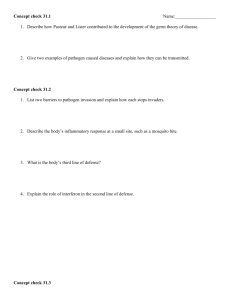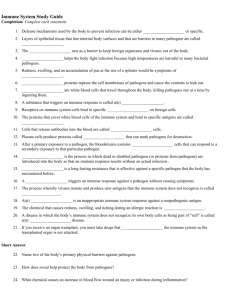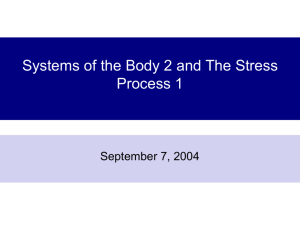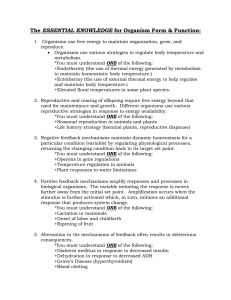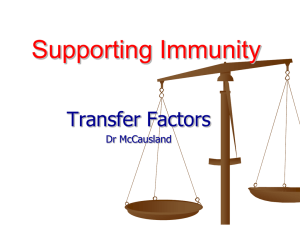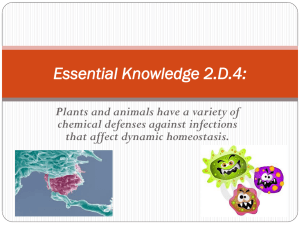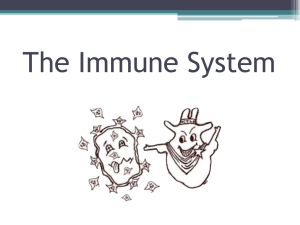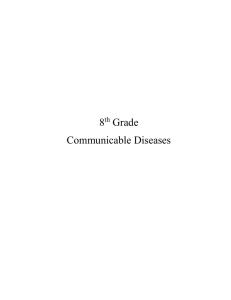Unit 7 Objectives 2015
advertisement
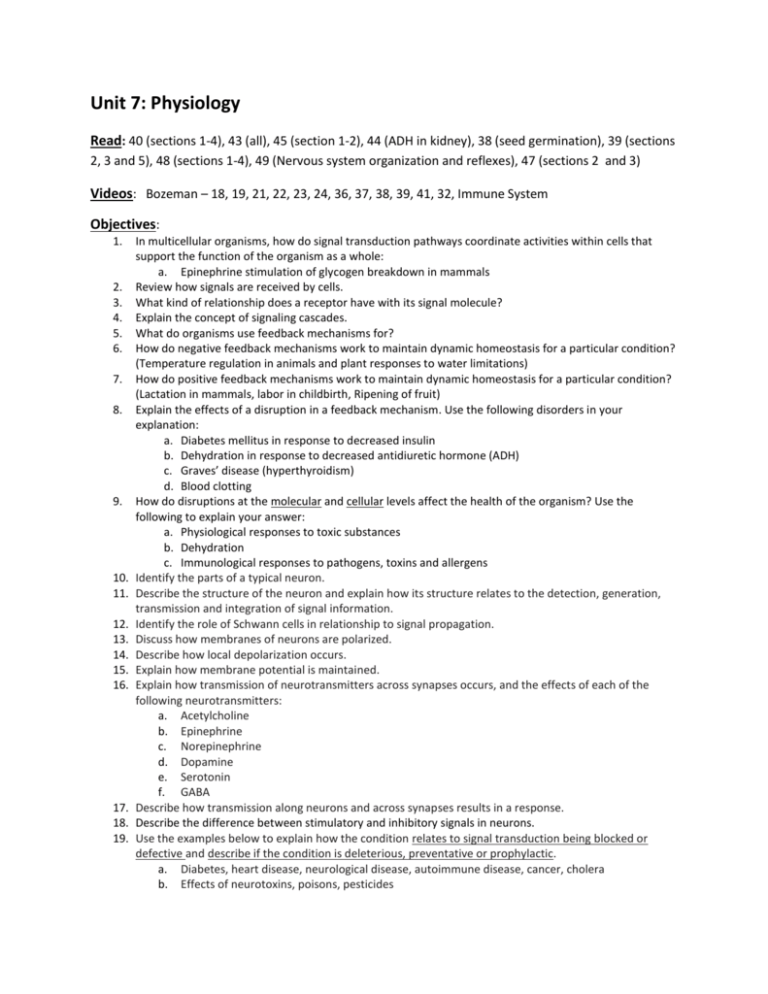
Unit 7: Physiology Read: 40 (sections 1-4), 43 (all), 45 (section 1-2), 44 (ADH in kidney), 38 (seed germination), 39 (sections 2, 3 and 5), 48 (sections 1-4), 49 (Nervous system organization and reflexes), 47 (sections 2 and 3) Videos: Bozeman – 18, 19, 21, 22, 23, 24, 36, 37, 38, 39, 41, 32, Immune System Objectives: 1. 2. 3. 4. 5. 6. 7. 8. 9. 10. 11. 12. 13. 14. 15. 16. 17. 18. 19. In multicellular organisms, how do signal transduction pathways coordinate activities within cells that support the function of the organism as a whole: a. Epinephrine stimulation of glycogen breakdown in mammals Review how signals are received by cells. What kind of relationship does a receptor have with its signal molecule? Explain the concept of signaling cascades. What do organisms use feedback mechanisms for? How do negative feedback mechanisms work to maintain dynamic homeostasis for a particular condition? (Temperature regulation in animals and plant responses to water limitations) How do positive feedback mechanisms work to maintain dynamic homeostasis for a particular condition? (Lactation in mammals, labor in childbirth, Ripening of fruit) Explain the effects of a disruption in a feedback mechanism. Use the following disorders in your explanation: a. Diabetes mellitus in response to decreased insulin b. Dehydration in response to decreased antidiuretic hormone (ADH) c. Graves’ disease (hyperthyroidism) d. Blood clotting How do disruptions at the molecular and cellular levels affect the health of the organism? Use the following to explain your answer: a. Physiological responses to toxic substances b. Dehydration c. Immunological responses to pathogens, toxins and allergens Identify the parts of a typical neuron. Describe the structure of the neuron and explain how its structure relates to the detection, generation, transmission and integration of signal information. Identify the role of Schwann cells in relationship to signal propagation. Discuss how membranes of neurons are polarized. Describe how local depolarization occurs. Explain how membrane potential is maintained. Explain how transmission of neurotransmitters across synapses occurs, and the effects of each of the following neurotransmitters: a. Acetylcholine b. Epinephrine c. Norepinephrine d. Dopamine e. Serotonin f. GABA Describe how transmission along neurons and across synapses results in a response. Describe the difference between stimulatory and inhibitory signals in neurons. Use the examples below to explain how the condition relates to signal transduction being blocked or defective and describe if the condition is deleterious, preventative or prophylactic. a. Diabetes, heart disease, neurological disease, autoimmune disease, cancer, cholera b. Effects of neurotoxins, poisons, pesticides c. Drugs (Hypertensives, Anesthetics, Antihistamines and Birth Control Drugs) 20. Describe the anatomy of the vertebrate brain and relate the anatomy with the following functions. a. Vision and hearing b. Muscle movement c. Abstract thought and emotions d. Neuro-hormone production e. Forebrain (cerebrum), midbrain (brainstem) and hindbrain (cerebellum) f. Right and left cerebral hemispheres in humans 21. Explain how plants, invertebrates and vertebrates have multiple, nonspecific immune responses. Use the following to explain your answer: a. Invertebrate immune systems have nonspecific response mechanisms, but they lack pathogenspecific defense responses. b. Plant defenses against pathogens include molecular recognition systems with systemic responses; infection triggers chemical responses that destroy infected and adjacent cells, thus localizing the effects. c. Vertebrate immune systems have nonspecific and non-heritable defense mechanisms against pathogens. 22. Describe mammalian specific immune responses. 23. Describe the two types of specific responses in the Mammalian immune system. 24. In the cell-mediated response, what is the role of cytotoxic T cells? 25. In the humoral response, what is the role of B cells? 26. Explain how antigens and antibodies work together. 27. What is an antibody? 28. How does a second exposure to an antigen differ from the primary exposure? 29. Explain how cells communicate by cell-to-cell contact, by discussing the example below: a. Immune cells interact by cell-cell contact, antigen-presenting cells (APCs), helper T-cells and killer T-cells. 30. Describe how in plants, physiological events involve interactions between environmental stimuli and internal molecular signals. 31. Explain how plants undergo phototropism, or the response to the presence of light 32. Explain the effect of change in length of night or Photoperiodism. 33. Use the following examples to describe how internal and external signals regulate a variety of physiological responses that synchronize with environmental cycles and cues. a. Fruiting body formation in fungi, slime molds and certain types of bacteria b. Quorum sensing in bacteria 34. Explain the process of cellular differentiation. 35. Provide examples of external and internal cues that direct differentiation. 36. What is necessary for the normal development of an organism, and how is it regulated? 37. What causes observable cell differentiation? 38. Explain the roll of transcription factors during development and how they results in sequential gene expression. 39. What is the role of microRNAs in the development of organisms? 40. Homeotic (HOX) genes are involved in the development of what? 41. How have genetic transplantation experiments have given evidence of homeotic gene sequences? 42. How is seed germination regulated inn most plants? 43. What is the effect of genetic mutations in development? 44. Explain how programmed cell death (apoptosis) effect normal development and differentiation by using the following examples. a. Morphogenesis of fingers and toes b. Immune function c. C. elegans development d. Flower development

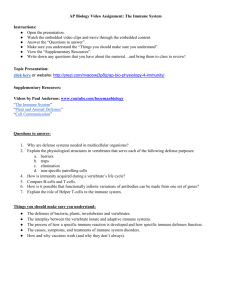
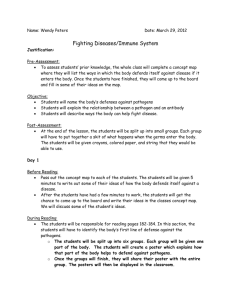
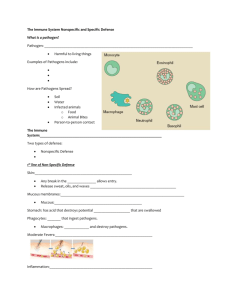
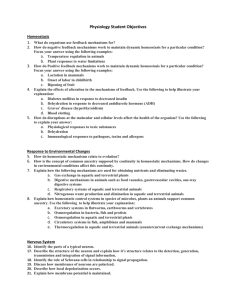
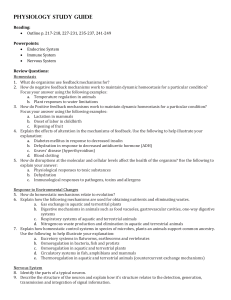




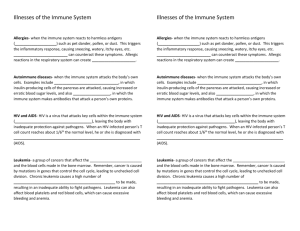
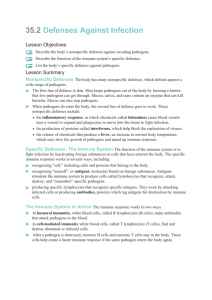
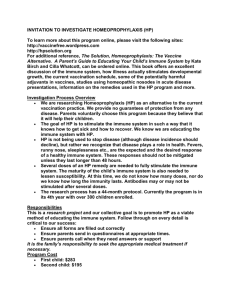
![Early immune system exposure linked to chronic disease[1]](http://s3.studylib.net/store/data/007014068_1-a55ba8d48625efeb17f49a28d1617f27-300x300.png)
